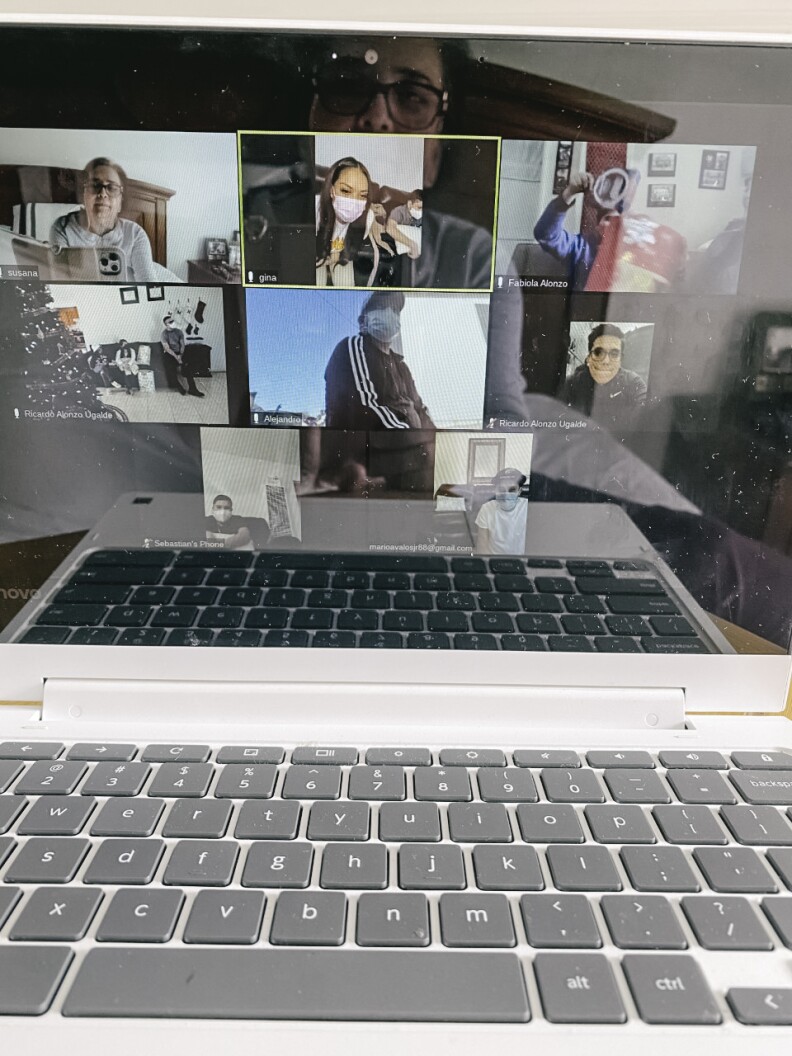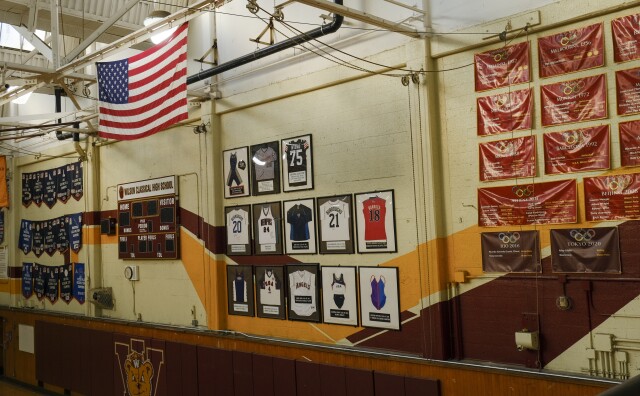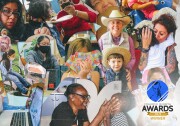There are an estimated 2.9 million children under age 5 in California — and a quarter of them live in Los Angeles County.
Parents count on a vast network of caregivers, mostly women of color, to help raise these kids.
Child care workers are educators teaching kids to talk, walk, read and process Big Feelings. They potty train and identify developmental delays. They help parents navigate a quagmire of subsidized child care programs. They administer medication. They absorb tears and trauma. They nurture the curiosity of little minds and meet incessant shouts of “Look at me!” with a smile.
-
We gave cameras to 12 Southern California child care providers, educators and caregivers and asked them to document their lives starting in the summer of 2020.
-
Join a live virtual event on June 17 and see the photos in real life at a series of photography installations throughout the region.
During the pandemic, they have risked their health and shouldered extra financial costs to keep families safe and allow parents to work.
They translated a fearful disease that many adults couldn’t quite comprehend into “un bichito muy malo” (a very bad little bug) to help children understand why they could no longer share toys and had to wear masks.
“We’re doing it all. We got 'Ph-Do’ degrees,” says South Central Los Angeles family child care provider Jackie Jackson. For the record, she also has a bachelor’s degree and more than 20 years of experience.

The UC Berkeley Center for the Study of Child Care Employment identified 116,800 people in the state’s early childhood workforce, but that’s not even close to including every important person in a young child’s life.
“What [people] don’t know is that we’re here,” says Lancaster family child care provider Yvonne Cottage. “A lot of times we’re misinterpreted as the B word — as the babysitter, right? The infamous B word.”
Increasingly, some experts are pushing back on the distinction often made between child care and early childhood education.
Science tells us that the first five years of life are a time of rapid brain development, whether little kids are growing and learning in private preschools, publicly funded classrooms, a neighbor’s living room, at Grandma’s house, or at a licensed family child care home or day care center.
“Exploration is where the learning happens,” says University of Illinois Chicago human development professor Sarai Coba-Rodriguez. “If you have a trusting adult, who you trust is able to protect you and guide you and love you, then that’s where more exploration happens.”
Manoja Weerakoon is the director of a Montessori preschool in La Habra, but you’re more likely to find her in a classroom than in her office.
“Sometimes I work in the baby class; I change diapers,” Manoja says. “I tell the teacher, ‘Take a break, I’ll change the diapers.’”
Her husband is the school’s administrator, and, though he’s cleared to teach, Manoja tries to keep him out of the classroom — the kids love him, she says, so he’s too much of a distraction.

La Habra Montessori cares for families who can pay for child care out of pocket as well as low-income families who qualify for subsidized child care through the state, though it’s not uncommon for families to wait weeks and even years on waitlists.
-
Share a photo and your story with the hashtag #childcareunfiltered. We may even feature some of your community stories on LAist throughout the summer.
One study from the nonprofit Advancement Project found that 51% of babies and toddlers in Los Angeles were eligible for the state subsidized child care program, but just 6% actually attended those programs.
Manoja says instead of turning families away when they don’t qualify for subsidies or are stuck on waiting lists, she’s lowered the tuition or, in some cases, eliminated it completely.
“There are situations like that, where I think at grassroots level, you have the power to help people,” Manoja says.

When Brenda Cruz started at Providence Saint John’s Early Childhood Directions program, she noticed the other teachers grabbing their first, second and third cup of coffee each morning.
“I’m like, ‘OK, well, I’m young, I have energy to put on these kids,’” Brenda says. “Once you start working with them, [it] makes you realize, ‘No, I actually need ALL my energy to work with them.’”
When she talks about her students, Brenda peppers her sentences with the vocabulary of child development. Climbing and jumping exercises, that’s “gross motor skills” — big muscle movement. Walking in a straight line to snacktime is an “opportunity to teach children how to cope with transitions.”
“I like to see them grow,” Brenda says. “I like to see them progress, to increase, to enhance their skills that one day will support them in becoming successful and fulfilling human beings.”

More than a quarter of California’s child care spaces are found in individual homes. The state licenses these family child care providers to care for up to 14 children.
“This is where the magic is coming from,” says Jackie Jackson, who calls her facility a family center — she puts emphasis on the word “family.”
On average in L.A. County, home-based child care is 17% to 36% cheaper than center-based care, depending on a kid’s age. These providers often offer extended and even 24-hour care —critical for working families.
Montebello provider Susana Alonzo says she has this motto: “Uno de mis lemas ha sido no sustituir a mamá,” she says — that she can’t replace a mother.
But what she can do, she says, is earn families’ respect and trust that their kids will be cared for, protected and loved at her house.
Home-based child care providers we talked to often spoke about the individualized attention they can give each child, including those with disabilities.
Susana has cared for kids with epilepsy, attention deficit disorder, autism and heart problems. She says they’ve been put on her path for a reason.
Susana says she can’t say no to these kids — and doesn’t want to.
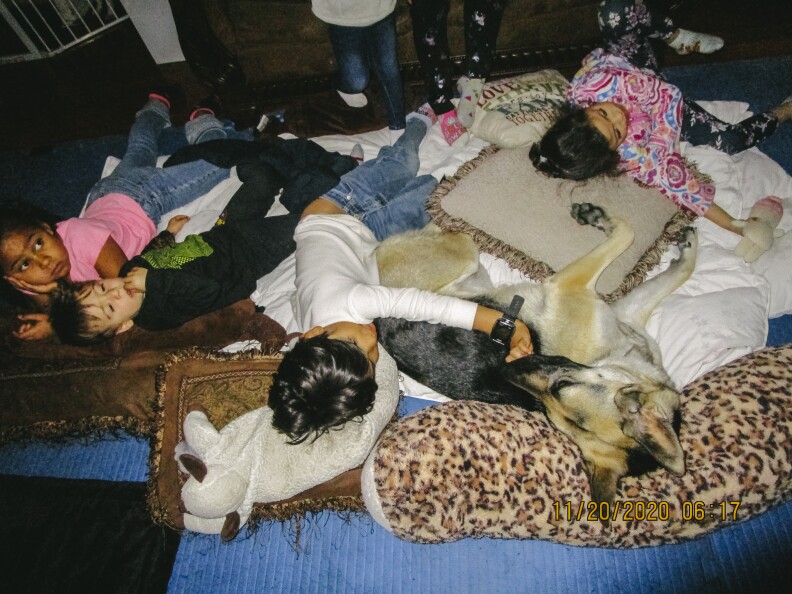


Jackie says over the years, she’s worked with children who have sensory disorders, autism and developmental delays.
“I feel like every child that comes up on my doorstep, there’s something that our divine wants me to reach in and pull out of that baby,” Jackie says. “So my job is to go and fetch and find what it is.”
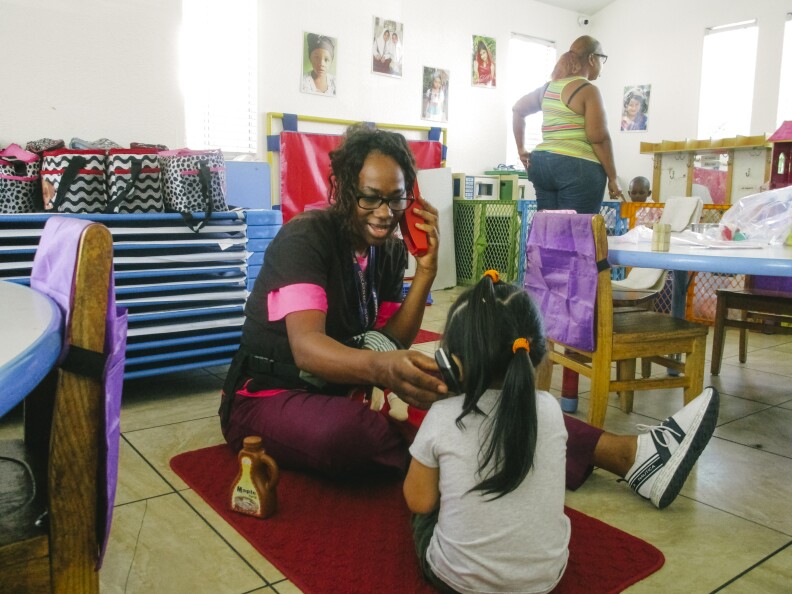
A young girl recently in Jackie’s care was hesitant to talk. Jackie worked with the child daily, play-talking on the telephone and animating puppets until the words started to flow.
“This is where we know we got the talent to make a difference,” Jackie says. “And we know we have the time to make a difference.”

Last summer, about 40,000 California family child care providers unionized after almost two decades of organizing.
Providers in at least 11 other states have collective bargaining rights, and other child care unions have secured higher wages, professional development, and health insurance for their members.
California’s Child Care Providers United negotiated emergency relief for its members during the pandemic. Jackie is part of the committee negotiating the labor contract that will determine working conditions for providers who care for the children of low-income families who qualify for state subsidies.
“Providers don’t understand, and they don’t realize they have a voice,” Jackie says.

Luz Hernández relied on her mother in Mexico to help raise her daughters while she worked as a teacher.
Now a grandmother in Koreatown, she watches two of her grandchildren while her daughter Grisel works in food packing.
Luz says they sing, dance and laugh together, activities she often didn’t have time for with her grown daughters when they were kids.


Nationally, 60% of families with children 5 years old and younger rely on some kind of non-parental care. Of those who do, 41% turn to relatives, according to the National Center for Education Statistics.

But not everyone has family close by. Luz also occasionally watches kids from a few other families in her neighborhood, something she began doing after she realized there were many moms who wanted to work, but had a hard time finding anyone they could trust.
Grandparents are another set of eyes and ears to mark critical developmental milestones.
Recently, Jane Canseco’s husband was worried that their 2-year-old grandson Adrian wasn’t speaking more. Yet on Jane’s watch one day, Adrian surprised her.
“I heard him say something the other day, and it was an 11-word compound sentence — and he’s not 3 yet,” Jane says.

Adrian attends a home-based day care center in Orange across the street from Jane three days a week, then spends the late afternoons at her house until his parents get off work.
Cranky moods are soothed with a snack and a glass of milk, one of his favorites.
“We don’t have a routine,” Jane says. “I’ve never been good at a routine.” Her regular outings with her grandson include the park and the nearby horse stables.

“To me, this is how kids should grow up. Just out in nature with animals,” Jane says. “And in conversation with somebody.”



More than once, when Melissa Rivera has told people she’s a nanny, they’ve responded : “Oh, you’re still babysitting?” And she has to clarify: “No, I’m nannying.”
There’s a difference.
“I always tell the parents, I say, even before I started teaching, ‘Don’t consider me an extension of you. Consider me an extension of their teacher,’” Melissa says.

She’s currently studying for a bachelor’s degree in education and has taken classes in nutrition, discipline, child development and newborn care, learning the ins and outs of everything from rashes to organic mattresses.
“I get to be able to be there for the growth and the development and the good times and the hard times,” Melissa says.

She started working for a Ventura County family with kids ages 2, 4 and 5 in October. For the most part her focus is on the kids, who call her Mimi, but occasionally there are other household tasks like dishes, toy wrangling and doing the family’s laundry.
“Can you imagine folding your boss’s underwear, you know?” Melissa says. She doesn’t think twice about chores like that now.
“I’m results driven,” Melissa says. “So I really don’t mind doing it.”









